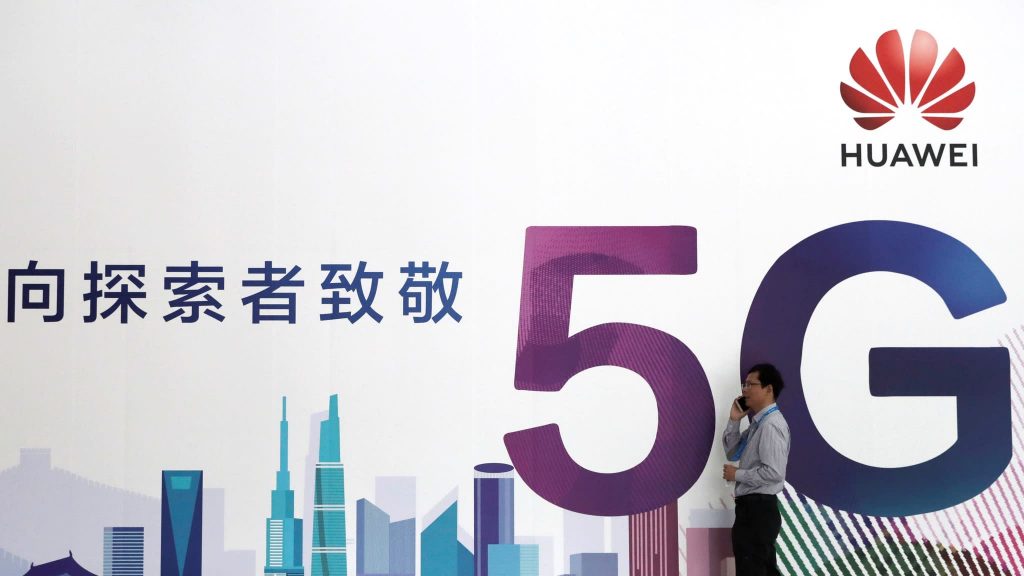
- China wants to use the 5G technology to enhance its global influence through “digital encirclement of the world”
- Companies from China own 36% of all 5G standard-essential patents, more than double their share of comparable 4G patents
- China plans for the dominance of the virtual world through 5G networks in South Asia and Europe which would be provided by Chinese technology giants.
- Countries and militaries who do not have indigenous 5G capabilities for IOT platforms and who allow Chinese 5G, could then become hostage to Chinese technology
- China is facing stiff competition from Indian companies like Jio (Reliance) and few Indian actors are vandalizing Jio mobile towers and attacking the owner in the name of farmers protests.
- Jio also has plans to roll out 5G enabled smartphones in collaboration with Google which will be a severe blow to Chinese companies
- Political parties and leaders backing the protests in the name of farmers must think in the nation’s interest and analyze whether they have to play according to foreign designs to divide us or stay united.
China claims to have given the World gunpowder, Printing Press, Compass, Centralized Administration and more centuries ago. But in the 21st century China has been accused by all its neighbours for taking away land, air and water from its neighbours. Nations have been debt trapped, drought forced upon riparian states, encouraging civil war, terrorism, supporting terror groups and individuals in the United Nations, supporting countries accused of being state-sponsor of terrorism, mishandling the breaking out of Covid-19 virus, militating neighbourhood and not following international norms or rules of engagement.
Now China has exercised itself in the field of 5G and is using its objective to be a leader and use the technology to enhance its global influence through “digital encirclement of the world”. Internationally and in the neighborhood China is taking the lead in 5G. But they are facing stiff competition from Indian companies like Jio (Reliance).
However few Indian actors are vandalizing and destroying Jio mobile towers in the name of farmers protests. Several prominent opposition politicians have targeted Reliance and verbally attacked the owner in the name of expressing solidarity with the farmers. So what could be the relation between China global ambitions and targeting of Reliance Jio in India? Let us explore.
China’s plan to dominate the 5G market
Chinese Military supported Companies like Huawei, ZTE Corp. are among the biggest owners of key patents in 5G technology in the world. As a result, the Chinese tech juggernaut as of early February owned 1,529 “standard-essential” 5G patents, the most of any company. Together with patents owned by ZTE, the state-owned China Academy of Telecommunications Technology, and Guangdong Oppo Mobile Telecommunications Corp., companies from China own 36% of all 5G standard-essential patents, more than double their share of comparable 4G patents, according to data-analytics firm IPlytics.
The Chinese 5G patents cover technology associated with everything from 5G handset components to base stations and driverless-car technology. And telecom companies around the world including those operating in places where Huawei gear might be off-limits will have to pay royalties to Huawei to license that technology when it comes to implementing 5G on the ground. Now the challenge is Chinese involvement in 5G wireless networks stem from allegations that cellular network equipment sourced from Chinese vendors may contain backdoors enabling surveillance by the Chinese government (as part of its intelligence activity internationally) and Chinese laws, such as the China Internet Security Law, which compel companies and individuals to assist the state intelligence agency on the collection of information whenever requested.
Four members of the Five Eyes international intelligence alliance Australia, Canada, New Zealand and the US have declared the use of Huawei telecommunications equipment, particularly in 5G networks, poses “significant security risks”, while Canada is carrying out its own security review. The United States, Australia and Vietnam have banned Chinese companies from providing its 5G equipment due to security concerns. The United Kingdom is also expected to implement a complete ban following resistance from MPs. Japan has also heavily discouraged use of Chinese equipment.
China launched 5G services earlier this year and it is estimated that there are about 7,18,000 stations nation-wide that transmit and amplify 5G signals to about 170 million devices. In a bid to accelerate its aim for global leadership in key technologies, China has prepared a US dollar 1.4 trillion master plan backed by President Xi Jinping himself. It calls for the nationwide laying down of 5G networks, installation of cameras and sensors and development of AI software till 2025 that will drive automated factories and mass surveillance. As a part of this plan, China announced on December 28 that it will set up an additional 6,00,000 base stations next year.
COVID an opportunity for China!

After Coronavirus shattered the world economy, schools to temples to offices to markets and transportation were shut. A new alternative of online schools or offices started where daily life started and ended in the house for billions of people across the world. This made a sharp increase in use of laptops, mobile phones and online cash transactions and online purchase of goods and services. In order to tap this market China plans for the dominance of virtual world through 5G networks in South Asia and Europe which would be provided by Chinese technology giants.
The recent news of China and Nepal agreeing to increase the height of Mount Everest by three metres may look insignificant. But a deeper analysis reveals that it could lead to an invasion by Chinese 5G technology in Nepal. Such capability has the ability to control Nepal’s mountaineering and tourism industry. The launch of 5G in Nepal would mean that Nepal’s business interests could pass into Chinese control. Real-time information on weather, routes, map/terrain details, logistics and rescue programmes, etc, could be based on Chinese 5G, thus making locals or visitors to Nepal dependent on it.
China is also a major stakeholder in Mount Everest since a part of it lies in China occupied Tibet. A related development of infrastructure along the borders, where most mountaineering sites are, could make Nepal’s borders vulnerable and damage its tourism industry. With lower incomes, the tourism industry might get lured into Chinese cheap loans, leading to a strategic debt trap. The ramifications of such developments for India can only be imagined.
So the Chinese design encompasses the planet as a “digital encirclement of the world”. Combined with the BRI (Belt and Road Initiative), this encirclement would be complete. Intrinsic to the BRI is the fact that Chinese companies will build the digital infrastructure. Countries and militaries who do not have indigenous 5G capabilities for IOT platforms and who allow Chinese 5G, could then become hostage to Chinese technology, as seen during the pandemic. The CPEC (China-Pakistan Economic Corridor) is a clear example of how easy it is to encircle a country. Pakistan is today a virtual vassal state of China.
Enter India’s Reliance Jio

Reliance Chairman, Mukesh Ambani, announced in October last year that Jio will be rolling out indigenous 5G in the latter half of 2021 once it is able to get additional spectrum. In October, Reliance began trials for its 5G technology along with US-based Qualcomm and claimed to have achieved a speed of 1 Gigabyte (1GB) per second. Jio also has plans to roll out 5G enabled smartphones in collaboration with Google. In case it succeeds, it will be a severe blow to Chinese companies like Xiaomi and Vivo which presently dominate the Indian smartphone market. The Indian government has also announced (December 16, 2020) that it will be auctioning spectrum in March 2021. This creates the possibility of Reliance Jio becoming a serious player in the rollout of 5G technology next year and thus pose a serious threat to Chinese ambitions.
The biggest challenge within India of late is of the protesting farmers and their supporters who have resorted to violence and targeting Reliance Jio telecom towers in Punjab. More than 1500 telecom towers in Punjab have been damaged by them and vandalised with power supply being snapped and cables being cut in several parts of the state. This has led to disruption of telecom services. In some cases even the generators used for standby power to the telecom tower have been looted with the police and the local administration being mere bystanders. Most of these actions have taken place in the Doaba belt which has a large number of immigrants abroad.
Could it be possible that such action has been funded by Chinese interests under the guise of farmer protest? Political parties and leaders backing the protests in the name of farmers must think in the nation’s interest and analyze whether they have to play according to foreign designs to divide us or stay united. At last an Indian Company with the roots of India has stood to fight 5G dominance of China for now and the world in the future. ‘Atma Nirbhar Bharat Abhiyaan’, to aid our country out of the Coronavirus crisis (by making us self-reliant) will become meaningful only when 1.3 Billion people don’t’ get trapped by international actors to get divided or by national actors who do politics for narrow political gains. For now India is fighting for self-reliance and 5G can help it lead.
The 6G geo-political game
India has to be ready to play the 6G geopolitical game. “This endeavor is so important that it’s become an arms race to some extent,” said Peter Vetter, head of access and devices at Nokia Oyj’s research arm Bell Labs. “It will require an army of researchers on it to remain competitive.” Former President Donald Trump had said in early 2019 that he wanted 6G “as soon as possible.” China is already moving ahead. The country launched a satellite in November to test airwaves for potential 6G transmission, and Huawei has a 6G research center in Canada, according to Canadian media reports. Telecommunications equipment manufacturer ZTE Corp. has also teamed up with China Unicom Hong Kong Ltd. to develop the technology.
The Alliance for Telecommunications Industry Solutions, a U.S. telecom standards developer known as ATIS, launched the Next G Alliance in October to “advance North American leadership in 6G.” The alliance’s members include technology giants like Apple Inc., AT&T Inc., Qualcomm Inc., Google and Samsung Electronics Co., with Europeans too joining the efforts, it is important for India to enter the 6G geopolitical game.
This is significant as we do not want to again see our own countrymen becoming pawns or victims of foreign companies and enemy entities. Achieving self-reliance in 5G and beginning to work on 6G on our own capabilities is sure to help Indian entrepreneurs, companies which can make the country a Atma Nirbhar Bharat.
M.AM.PhiL/(PhD SNU South Korea)
